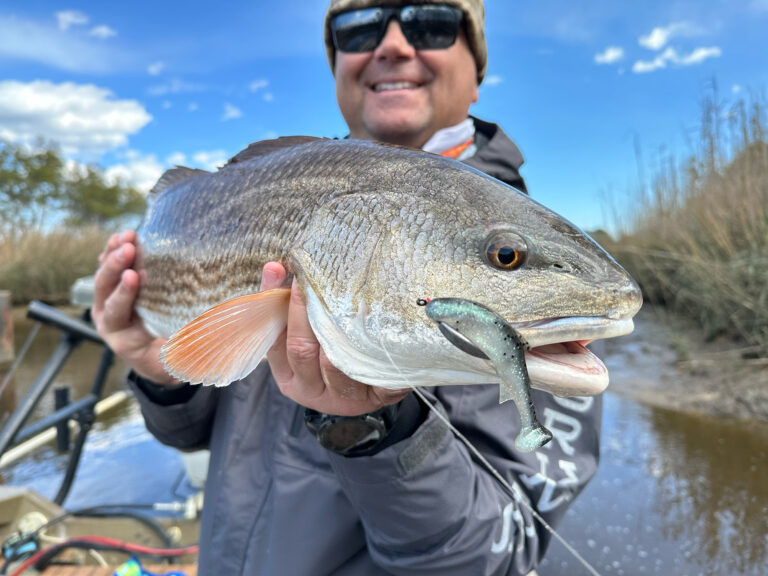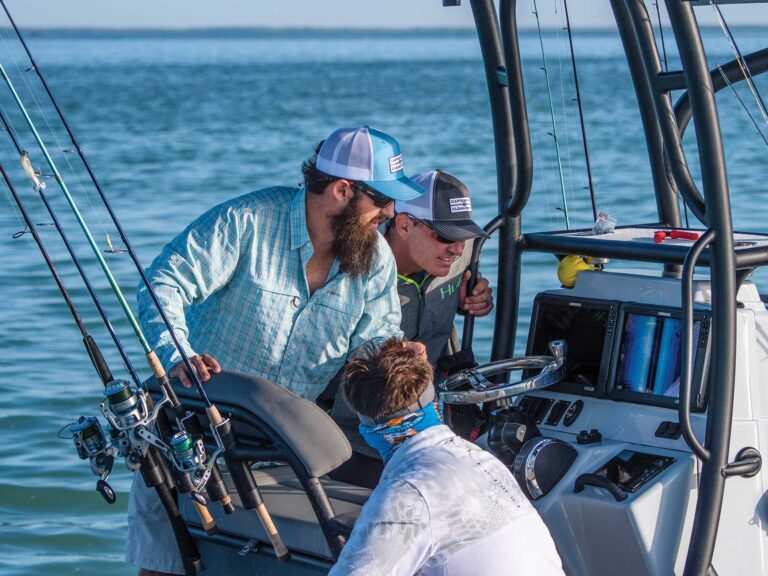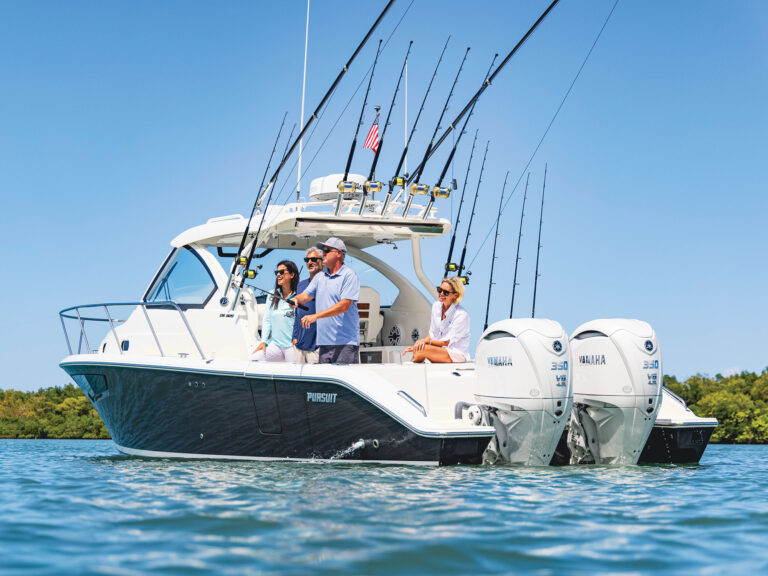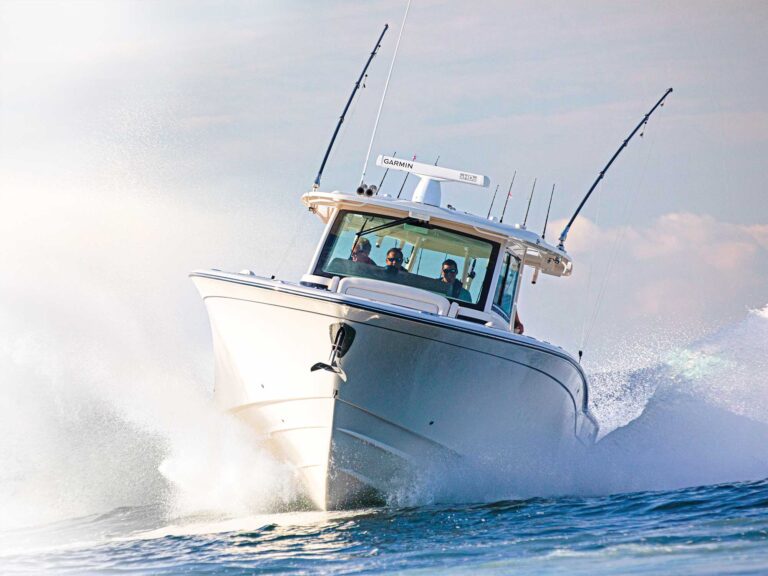“Phenomenally amazing morning” would still fall short of describing the bite we experienced off the Cayman Islands this past November. Within a two-hour window, between sunup and 8 a.m., we boated 10 wahoo to 57 pounds and two yellowfin tuna to 45 pounds and released a blue marlin. By noon our wahoo total increased to 15, and we even scored two more yellowfin and a dolphin. We could have caught even more for sure, but with plenty of fish iced down for the entire crew, we called it a day.
I was shooting an episode for my television series in the Caymans with friend and noted marine artist Carey Chen. We were aboard the 65-foot Hatteras Cayman Time, captained by Chris Briggs and Eric Rivers and with Jacob McTaggert, Nick Jones and Charles Ebanks working the cockpit. This was a virtual dream team of anglers on Grand Cayman, and the action was off Pickle Bank, some 80 miles out.
What I found amazing was that we lost very few wahoo, our intended target. We missed a few fish, but I’d say we enjoyed at least a 95 percent success rate hooking and holding on to the striped speedsters. Furthermore, it was a chore removing hooks from the fish we boated, which illustrated just how efficient our trolling rigs were. Compared to some of the sleek and racy wahoo lures on the market, our baits appeared simple and basic; they were all Ilander-skirted ballyhoo rigged on No. 12 (200-pound-test) single-strand wire. We were pulling them on 80-pound-test monofilament outfits and .035 (80-pound-test) Monel wire-line outfits.
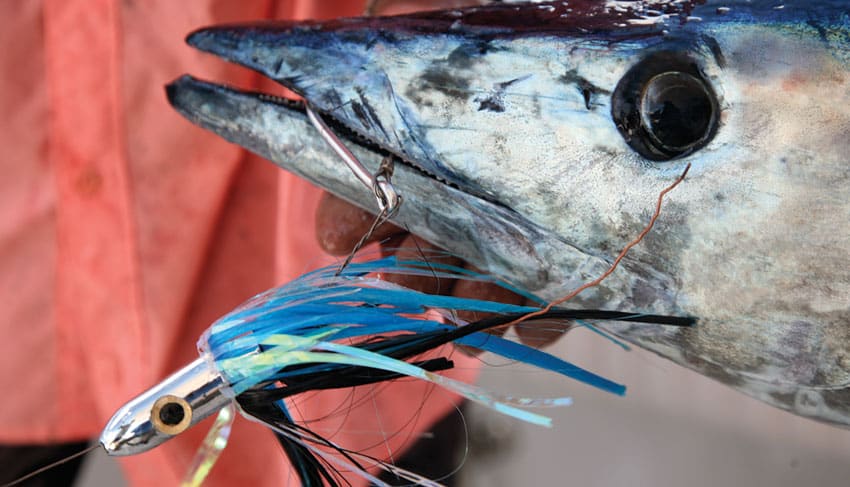
Double Jeopardy
Closer inspection of our skirted ballyhoo baits revealed where the basics ended: Each bait featured a long-shank lead hook positioned by the vent and a slightly smaller shorter-shank free-swinging hook with its point riding upward. The latter was the stinger hook, and it rode alongside the bait’s tail. I affectionately dubbed this setup the Cayman Crusher after it cleaned house during our shoot. It is a standard among serious wahoo anglers in the Caymans, as well as accomplished tournament competitors the likes of Briggs and Ebanks.
There are a few things that enable the Cayman Crusher to wreak havoc on fish. Positioning the lead hook so far aft tends to foil short-striking fish. And if for some reason the lead hook doesn’t stick, that stinger hook will. In several instances, both hooks were deeply embedded in the jaws of a wahoo, an insurance of sorts against the fish shaking them free. Additionally, when trolled, the free-swinging stinger hook flutters alongside the ballyhoo’s tail; this emits a vibration that fish key on and creates the illusion of the tail beating and kicking as the bait tries to escape predation. Then, of course, there’s the streamlined and brilliant appearance of the Ilander skirt, which adds flash, in addition to preventing the ballyhoo from washing out at brisk trolling speeds.
Step One
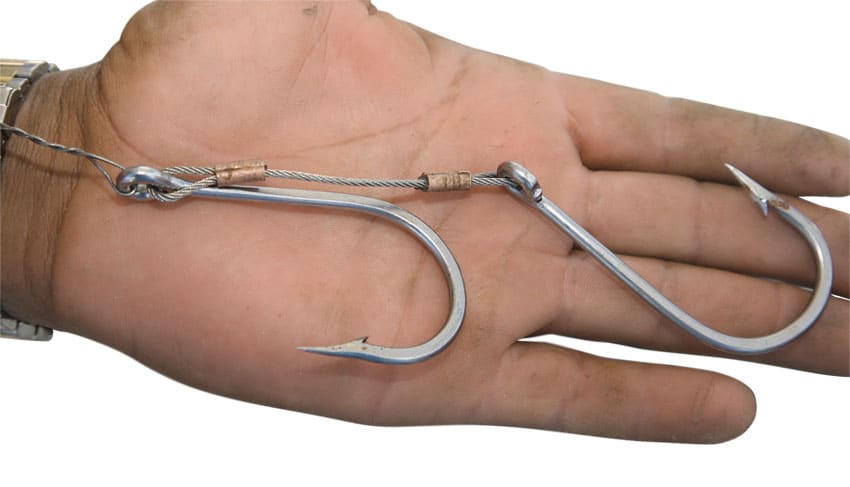
Step 1
Attach the lead hook, either a 10/0 or 11/0 (based on bait size), to the leader with haywire twists. The exact number of twists is determined by laying the hook alongside the ballyhoo and lining up its point with the bait’s anal cavity. Use as many twists as it takes to go from the eye of the hook to the bait’s lower jaw. Next fabricate the stinger rig. Lay the bend of the stinger hook even with the bait’s tail to determine the distance from the eye of the stinger hook to the eye of the lead hook. Make sure the stinger hook point rides upright, as opposed to point down like the lead hook. Crimp the correct length of 480-pound-test cable to the stinger hook and then to the eye of the lead hook alongside the main leader and opposite the open part of the eye. Securing the stinger cable on this side lessens the risk of the hook eye pulling open under great stress.
Step 2
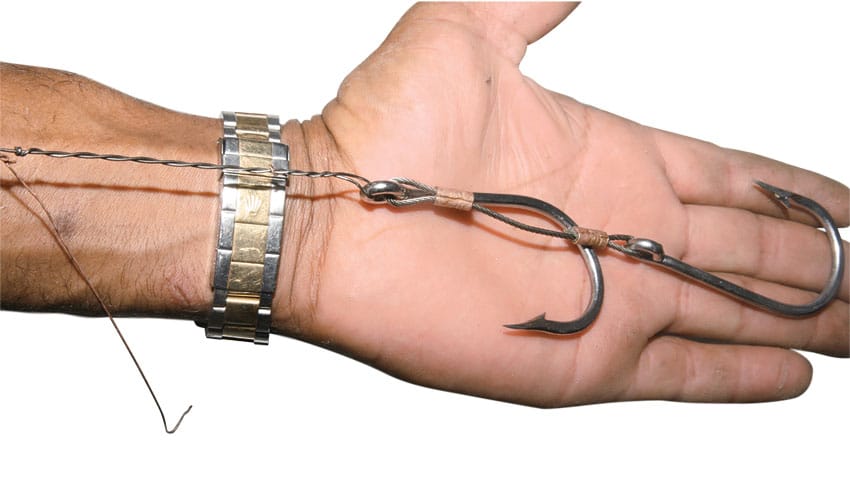
Now, secure a strand of soft rigging wire to the leader and form a small loop in the leader’s opposite end by wrapping a second haywire twist to connect a snap swivel to the main line.
Step 3
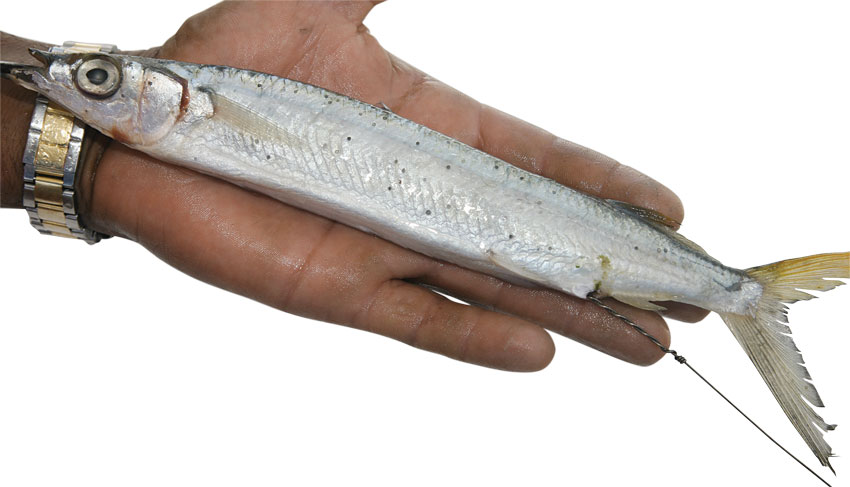
Slide the end of the leader into the ballyhoo’s vent and snake it through the body cavity and out the center of the throat latch.
Step 4
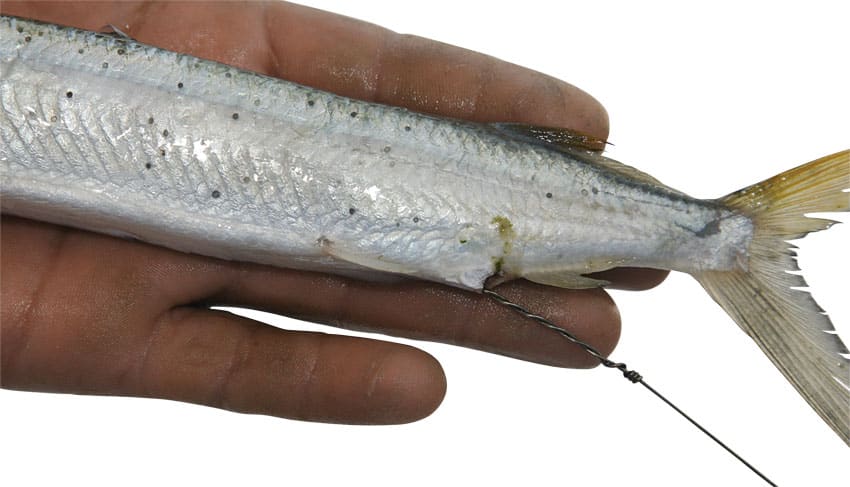
Step 5
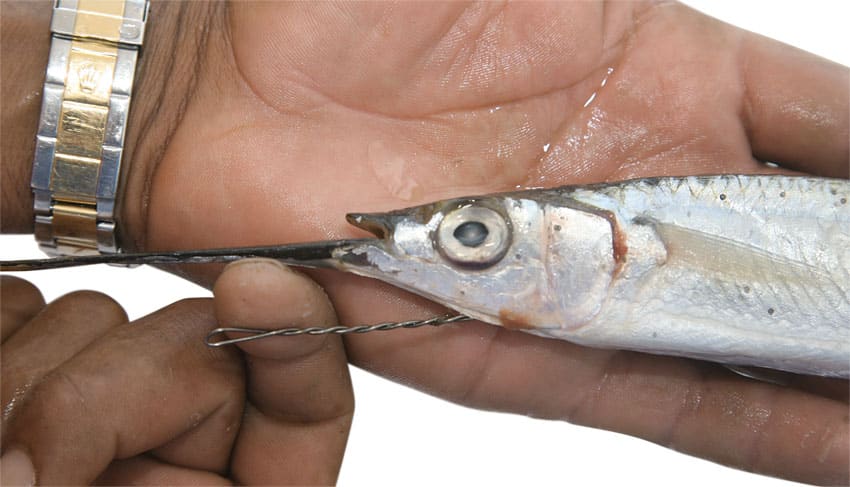
Step 6
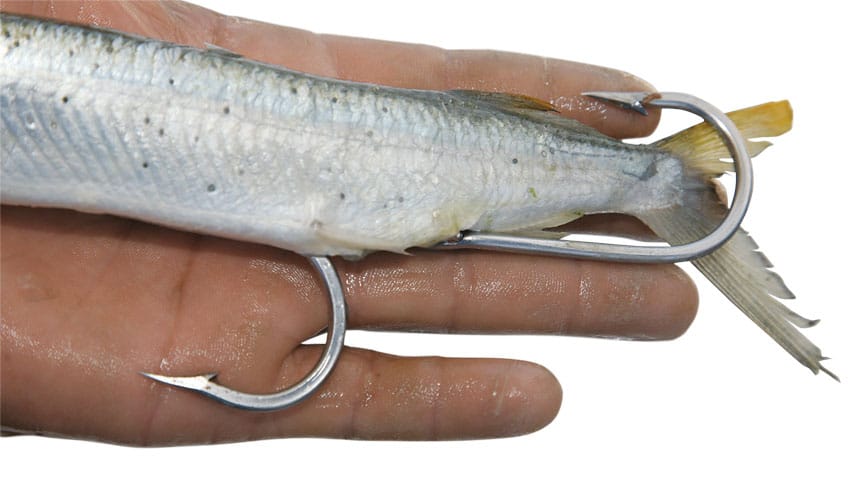
Pull the leader through the bait until the eye and shank of the lead hook are snugged up inside the body cavity and the stinger hook is dangling outside the bait.
Step 7
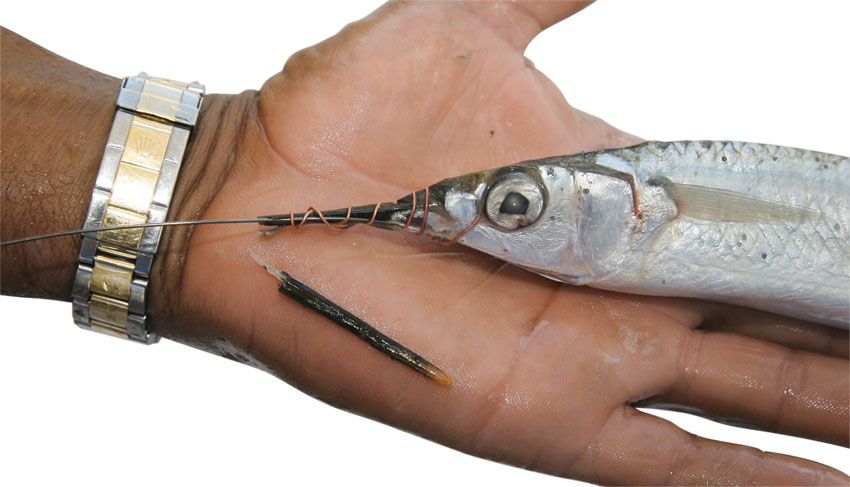
Secure the bait to the leader by running the soft wire through the bait’s eyes and following with a series of tight wraps going forward around both jaws and the leader.
Step 8
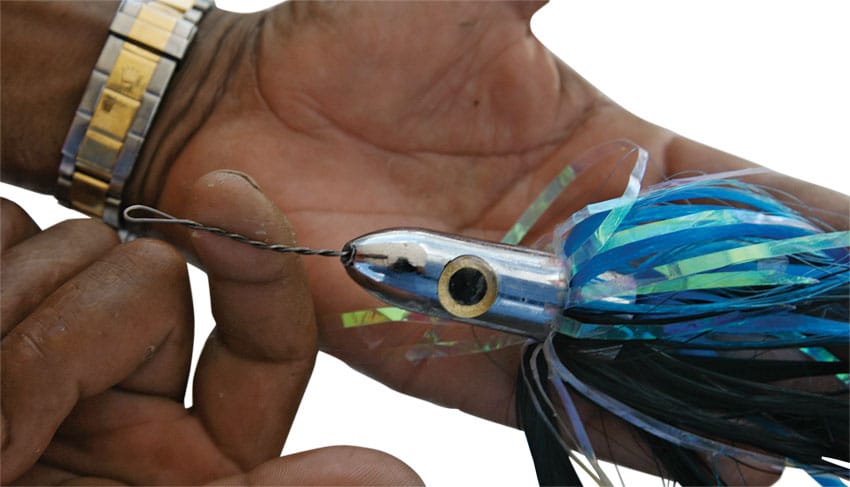
To complete the rig, slide an Ilander lure onto the leader and over the bait’s snout.





